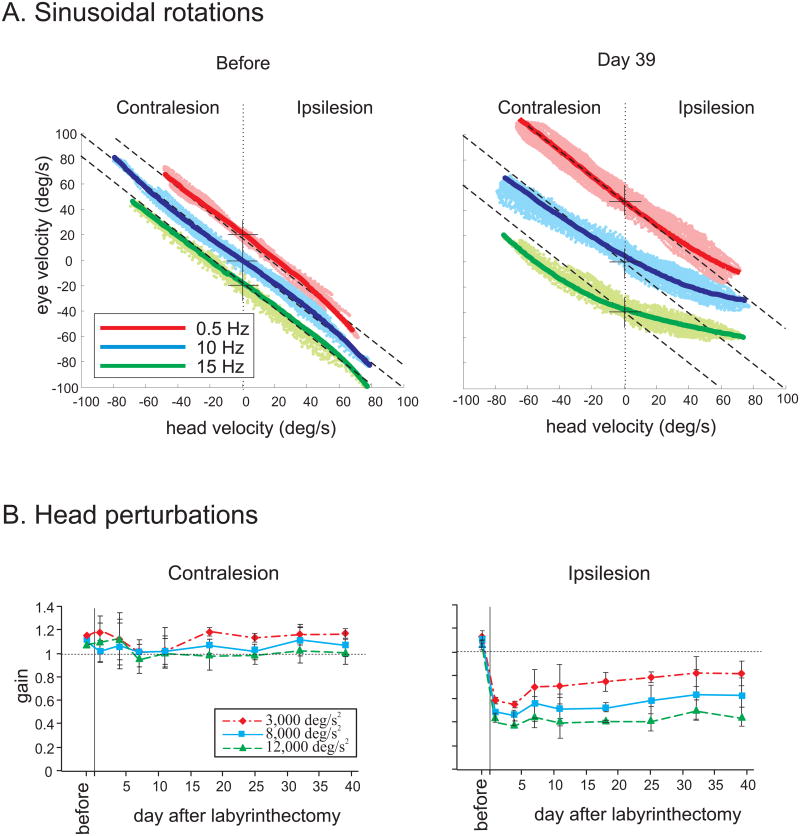Figure 1.
Compensation in the VOR response following unilateral labyrinthectomy in macaque monkeys. A. Response to sinusoidal rotations at 0.5 (red), 10 (blue), and 15 (green) Hz (peak velocity of 40 °/s) before (left) and 39 days (right) after lesion. Traces are offset from their zero eye velocity (cross) for clearer presentation. Light colors show data points and the dark line is fitted to the points using the 3rd order equation. Dashed lines have a slope of -1 (i.e., perfect VOR response). Note that even at this late stage after labyrinthectomy, responses gains become increasingly attenuated with rising frequency for ipsilesional half-cycles. B. Mean VOR gain elicited by transient head perturbations before and at different days after lesion. Head perturbations reached peak accelerations of 3,000, 8,000, and 12,000 °/s2. Responses reach steady-state levels by around day 18. Error bars represent standard error of the mean.

